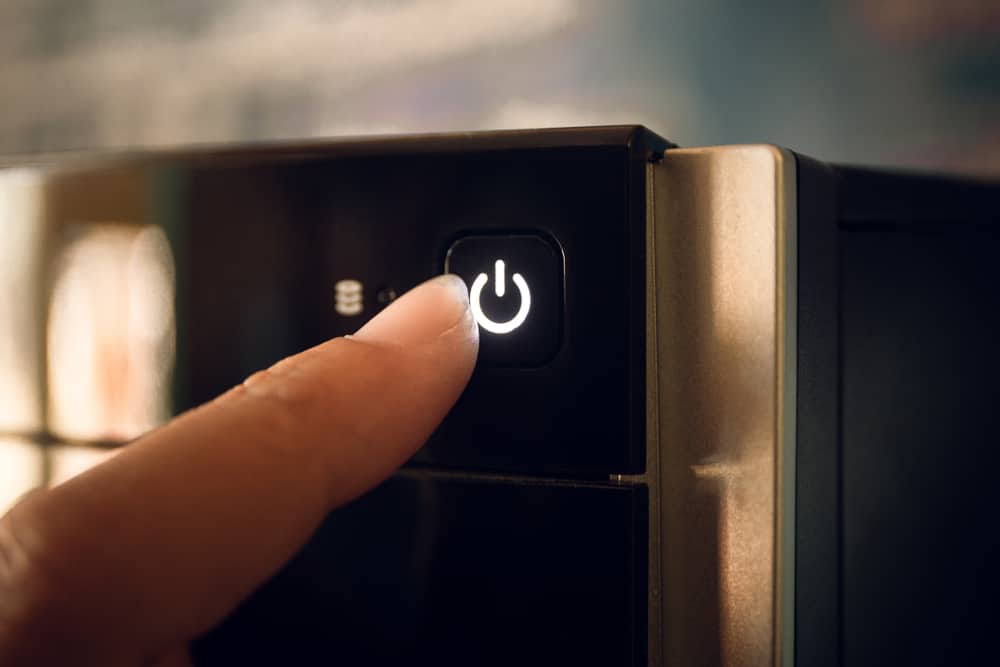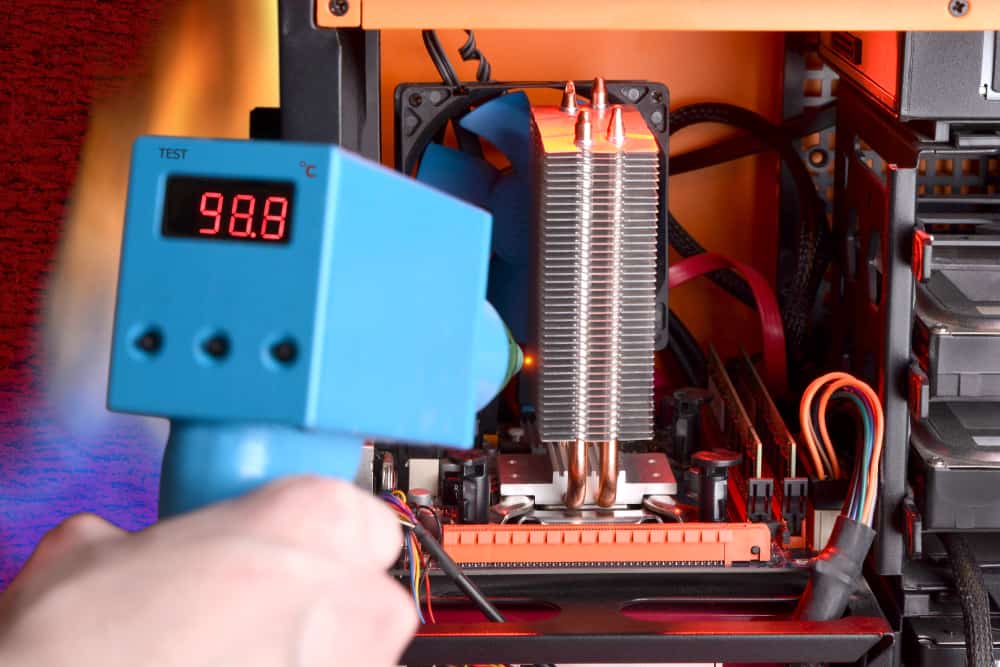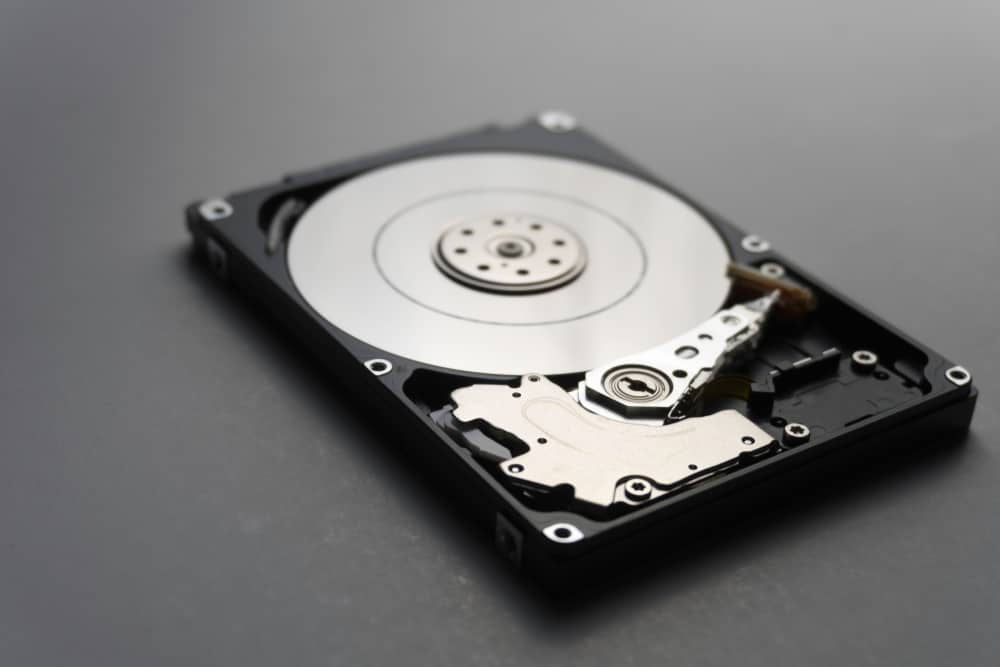Wd Blue 3d Nand 500gb Pc Ssd Failure Rate

Western Digital is a reputable brand name among HDD and SSD manufacturers.
The WD Blue is one of their popular products offered in different sizes.
While WD is one of the most reliable brands in the market, you may wonder how long a WD Blue HDD lasts.
How Long Do WD Blue HDDs Last?

Western Digital 4TB WD Blue PC Hard Drive HDD - 5400 RPM, SATA 6 Gb/s, 256 MB Cache, 3.5" - WD40EZAZ
The WD Blue can last between four and six years under normal use.
However, this estimated lifespan isn't based on any studies.
The hard drive's lifespan depends on many different factors, including the manufacturer, materials, physical conditions, usage, and many others.
However, most hard drives start to show signs of failure within three years, although some may work for ten years and more.
WD Blue's Average Lifespan
Western Digital hard drives are generally one of the most reliable ones, although you may find one or two brands with lower failure rates.
According to the studies conducted by a cloud company called Backblaze, HGST, Seagate, Toshiba, and WD are among the best HDD manufacturers in terms of having low failure rates.
However, the life expectancy of a hardware component, a hard drive included, depends on a wide range of factors.
One of the most important factors is how you use and take care of it.
The same thing goes for WD Blue hard drives.
Most studies on hard drive reliability and lifespan focus on the annual failure rates and not how long they generally last.
As a result, there's no definite answer to how long you can expect a WD Blue HDD to last.
Another stat you'll see regularly thrown around is the hard drive's Mean Time Before Failure (MTBF), which can indicate a hard drive's average lifespan.
However, it can't be a reliable indicator since manufacturers have different criteria for determining this value, and studies have shown that it's overestimated for commercial purposes.
Many manufacturers have replaced the MTFB with the AFR (Annual Failure Rate).
According to Backblaze stats, WD hard drives have a high reliability rate due to their low AFR.
The best criterion that helps us estimate the average lifespan of WD Blue, as with any other hardware, is its warranty period.
According to WD's website, the WD Blue has a two-year limited warranty.
However, most hardware components last longer than their warranty periods, and you could expect a WD Blue to last between four and six years with normal use.
Again, these numbers aren't definitive as a hard drive may fail within the first week or last up to ten years.
However, that's the average lifespan you can expect from a reliable hard drive like the WD Blue.
Factors That Affect Hard Drive Longevity

As mentioned, the lifespan of a hard drive depends on many different factors, although some HDDs fail during the first weeks for no apparent reason.
However, you can consider the following factors to prolong your HDD's life.
1. Brand And Manufacturer

Western Digital 1TB WD Blue Mobile Hard Drive HDD - 5400 RPM, SATA 6 Gb/s, 128 MB Cache, 2.5" - WD10SPZX
It's a known fact that a product's brand and manufacturer can affect its quality and lifespan.
The manufacturing processes and raw materials determine how long a hard drive can last and how much it can resist harmful factors.
Finding out how long a specific brand HDD can last is difficult because there are no reliable statistics.
Even different models of the same brand have varying lifespans and failure rates.
However, some studies show the average lifespan of reputable hard drive brands.
Although these studies are conducted under controlled conditions that can't be similar to those in which we operate our hard drives, they can give you a rough idea of how long they live.
2. Frequently Turning On And Off

Hard drives consist of spinning parts that store data, making them vulnerable to wear and tear.
When you shut down the computer, these spinning parts have to stop, and when you turn the computer on, they start spinning.
Frequently turning the computer on and off will cause the hard drive to spin up and down, leading to unnecessary wear and tear.
If you don't plan on using your computer for a few hours, put it in sleep mode or hibernation to prevent excessive pressure on the hard drive.
3. Physical Factors

Hard drives are sensitive components that can deteriorate fast if you don't keep them in optimal conditions.
One of the most harmful physical conditions is extreme temperatures caused by system overheating.
The materials that hard drives are made of make them vulnerable to excessive heat.
The spinning disks are covered with a magnetic film that stores data.
Heat can cause magnetic instability and damage this magnetic film.
Although manufacturers use different ways to minimize this risk, they can't eliminate it.
As a result, you should try to keep your computer in a cool and well-ventilated place and make sure all the internal fans are working properly.
Keep your computer away from extremely hot and cold areas because low temperatures can be equally harmful.
Another physical factor that can lead to premature failure is dust buildup since it can trap heat inside the computer and prevent the fans from working properly.
That's why it's essential to regularly clean the internal parts of your computer and make sure everything is dust-free.
Use rubbing alcohol and canned air instead of water to clean the computer because moisture is another harmful factor that can lead to corrosion and failure.
In addition, you should prevent moisture buildup by keeping the computer in low-humidity areas with proper ventilation.
Vibration and movement can also lead to damage and failure.
Whether your hard drive is external or internal, you should always make sure it's stationary, especially when it's in use.
Although an external hard drive is more subject to physical damage, you should take care of both equally.
Make sure the hard drive is always sitting on a hard surface that makes it fixed in place, and if you need to move the hard drive or your laptop, be extra cautious to avoid drops, shakes, or bumps.
4. Power Issues

Hard drives are vulnerable to sudden power surges or drops, like any electronic device.
In addition to power outages and surges that are out of our control, forced shutdowns or suddenly unplugging the system can shock the device while it's working and its platters are spinning.
These cuts and drops in power can prove harmful to your hardware and software, leading to HDD failure.
As a result, you should always use surge protectors or UPS units to prevent sudden power cutoffs.
Don't place your computer in spots where you may accidentally trip over the power cable and unplug the system.
In addition, if you use an external hard drive, make sure to eject and unplug it after each use and before shutting down the system to avoid any unwanted power drops.
In addition to power surges, static electricity can also damage your hard drive.
Before setting up your computer system and plugging it in, ensure the outlet is properly grounded to avoid static shock.
If you need to open your computer case and inspect the internals, it's critical to ground yourself by touching a metal side of the case or any grounded metal to drain static shock.
Wearing a grounding bracelet is also recommended to avoid these shocks.
Finally, one of the most crucial components of your computer that can prevent power issues and protect your hard drive is the PSU.
It protects against over- and under-voltage, power surges and drops, and short circuits.
Always make sure it's healthy and operating correctly.
5. Running Disk Scans

As you use your hard drive over time, it may develop different issues such as bad sectors, file system errors, or partition tables, leading to data loss or shortened lifespan.
You can regularly check for these issues by running a "chkdsk" scan to detect and fix unknown errors.
These scans help you monitor your hard disk's health and take action before it runs into problems.
Here's how to run a disk scan:
Type Command Prompt in the taskbar's search box and click on the first result.
Type chkdsk c: /r /f in the box, but remember to replace the letter c with the letter assigned to your hard drive.
Press Enter to start the scan.
Now, the system starts looking for issues and fixes them before it asks you to restart your PC.
6. Overload And Overuse

Some people believe that the more you use your hard drive, the more quickly it fails.
However, that may not play a significant role as people believe.
There's a concept called the "Bathtub Curve" that shows how an electronic component, including a hard drive, works during its lifetime.
According to this curve, a component is more likely to fail during the first few months, primarily due to factory defects, and not overload and overuse.
If a hard drive doesn't fail during this period, it will last for an average of three to five years before it deteriorates due to wear and tear.
After this period, the instances of hard drive failure will increase because it's old, regardless of how much it has worked.
If you have an external hard drive, you may want to use it for a few months but don't store important data on it.
After this time, it's more trustable, and you can use it for more sensitive work.
However, it's always advisable to take regular safety measures to avoid data loss due to failure.
For example, you should regularly run virus scans and avoid downloading suspicious files on the internet to prevent malware infection.
In addition, downloading and running too many programs can occupy too much space and slow down your computer.
To help your hard drive run faster, delete temporary files such as caches, file fragments, cookies, or logs.
7. Defragment The HDD

Any hard drive will experience fragmentation after some time.
It's a natural process that happens because of how hard drives work.
They don't store data in an organized manner; instead, they divide data into different fragments and store each on the first empty portion they find.
Over time, the HDD runs into issues finding and putting together all the information as fast as possible.
As a result, it will slow down.
Defragmentation is an excellent and safe solution that can help the system gather all related information in one portion of the drive.
You can defrag the hard drive automatically.
To run the automatic disk defragmenter on Windows 10, type Defragment in Cortana's search box.
Click on the Defragment and Optimize Drives app to open the tool and see the list of your drives.
You can see the fragmentation percentage in front of each drive and a message that shows the disk needs optimization.
If your hard drive's defragmentation value is more than 20%, click Optimize to start the defrag process.
SSD Vs. HDD: Which One Has A Longer Lifespan?

Solid-state drives (SSD) are a popular storage option that has become more popular than HDDs.
They're faster, more durable, and more reliable than HDDs while consuming less power and offering higher storage space.
Since they don't have mechanical, moving parts, they're more resistant as they aren't vulnerable to shocks, magnetic fields, or physical damage.
However, like hard drives, an SSD is also prone to failure because they have an expected lifespan.
Although their expected lifespan is longer than HDDs, SSDs can fail quickly if they're not from a reputable brand, don't have a reliable technology, and aren't used and maintained properly.
According to Backblaze data, SSDs have a much lower annual Failing rate than HDDs.
However, the results can't be generalized for all SSDs and HDDs because the devices used in that study were different in terms of age: the HDDs were older than the SSDs.
The high failure rates were due to being older, and the SSDs may not be much more reliable than HDDs.
However, this reliability is reflected in the warranty periods provided by manufacturers, which are, on average, five years (as opposed to three years for most HDDs).
Signs Of Hard Drive Failure

Although a hard drive failure is inevitable, it doesn't have to be tragic (due to a sudden loss of your data).
While you should always have a backup of all your sensitive data in the cloud and other physical storage spaces, you should watch for signs of hard drive failure.
It has a number of tell-tale signs that you should take seriously and check your disk health to make sure everything is fine.
Here are the most important ones:
1. Repeated Crashes And A Blue Screen Of Death
When a hard drive is about to fail, one of the first signs that appear on a computer is the blue screen of death.
Although it can happen for other reasons, running the computer in Safe Mode can help you ensure it's due to a hard drive failure.
2. Missing Or Corrupt Files
If your system fails to open files, or worse, some of your files have gone missing without you deleting them, you should consider a failing hard drive a possibility.
You may receive errors like "The file is corrupt and cannot be opened."
If it's a one-time issue, you can ignore it, but it can't be a good sign if it happens frequently.
3. Unusual Sounds
As mentioned, hard drives store data on their spinning platters, which can get scratched or defective after long use.
Any unusual clicking or turning sounds coming from your hard drive can be a sign of imminent failure.
These noises could also indicate a component inside the HDD is malfunctioning.
Other signs include:
- Overheating
- The computer won't boot
- Bad sectors
- Changes in file names
If you experience any of these signs, the first thing to do is back up your data and check your HDD for any signs of failure.
Run the SMART monitoring scans to see if they show any problems.
Your hard drive has a built-in monitoring utility that allows you to diagnose any issues and get a SMART (Self-Monitoring, Analysis, and Reporting Technology) status.
To run the utility, open a Command Prompt window by typing cmd in the Windows search box.
Type wmic in the Command Prompt window and press Enter.
Type diskdrive get status, and hit Enter.
This command will get the system to run a scan and look for possible hard drive issues.
If there are any problems, you may see the disk status as Not Ok, Bad, Unknown, or Caution.
In this case, you may want to take your system to a technician and see what you can do about it.
Source: https://www.thetechwire.com/how-long-do-wd-blue-hdd-last/
Post a Comment for "Wd Blue 3d Nand 500gb Pc Ssd Failure Rate"